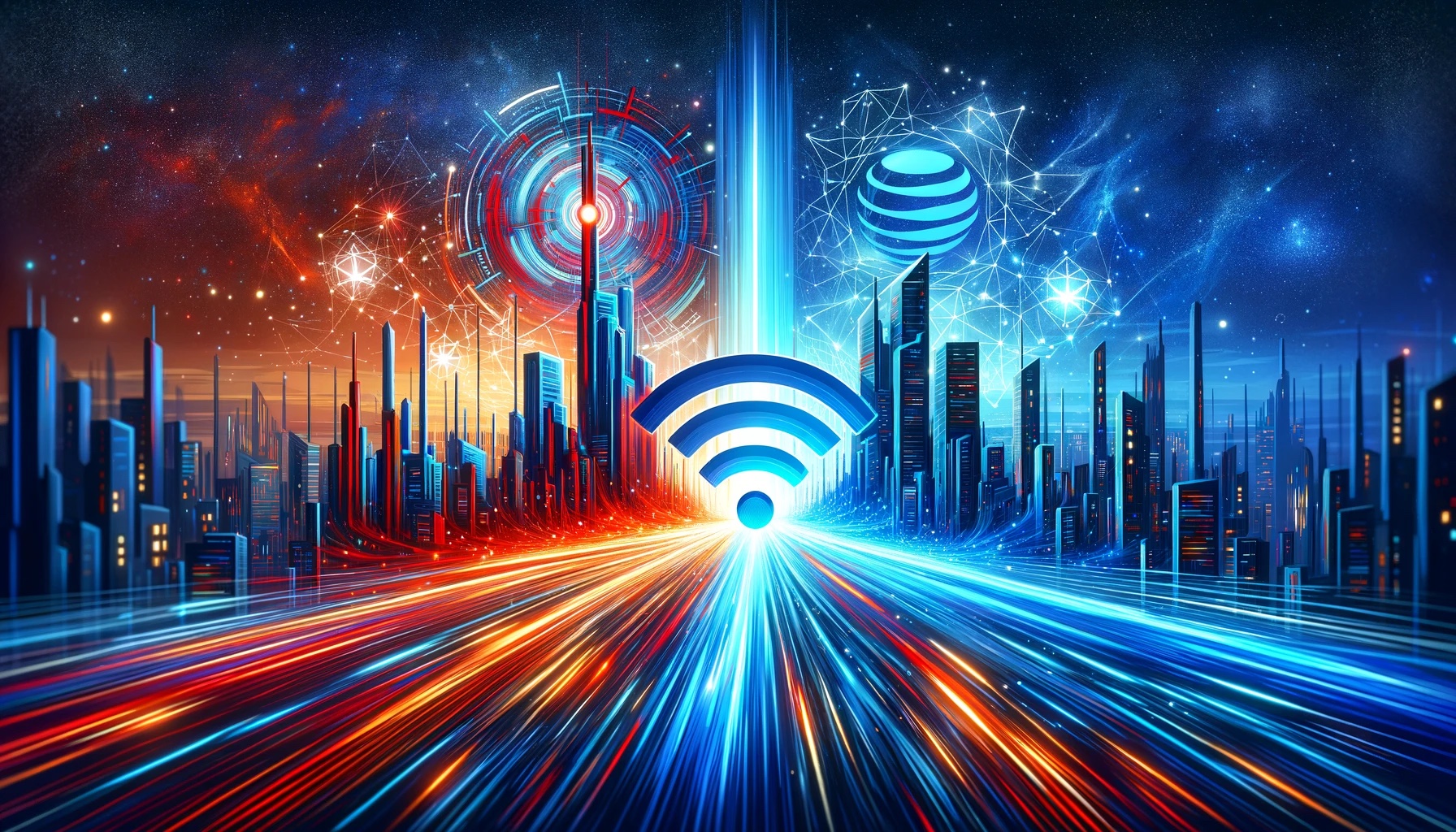Introduction
In our modern, fast-paced world, high-speed internet has become a necessity for both personal and professional use. From streaming entertainment and online gaming to remote work and cloud computing, the demand for faster and more reliable internet connections continues to grow. This article introduces fiber optic internet as a superior technology for internet connectivity, highlighting its key advantages and explaining why it stands out among other options.
Definition of Fiber Optic Internet
Explanation
Fiber optic internet is a type of broadband connection that uses fiber optic cables to transmit data as light signals. These cables are made of thin strands of glass or plastic fibers, which can carry large amounts of data over long distances with minimal loss of signal quality. Learn more about the different types of internet technologies.
How it Works
Fiber optic internet works by converting electrical signals carrying data into light, which is then transmitted through the fibers. At the receiving end, the light signals are converted back into electrical signals that can be read by computers and other devices. Explore more on how the internet works.
History and Development
Early Innovations
The concept of fiber optics dates back to the mid-20th century, with significant advancements in the 1960s and 1970s when researchers developed practical methods for using light to transmit data.
Major Milestones
Key milestones in the development of fiber optic technology include the invention of low-loss optical fibers and the commercialization of fiber optic communication systems in the 1980s.
Current Status
Today, fiber optic internet is widely adopted in many parts of the world, with ongoing efforts to expand its reach, especially in underserved areas. Read more about the current state of fiber optic internet adoption globally.
How Fiber Optic Internet Works
Components
The main components of a fiber optic internet system include fiber optic cables, transmitters, receivers, and optical network terminals (ONTs).
Types of Fiber Optic Cables
There are two main types of fiber optic cables: single-mode and multi-mode. Single-mode fibers are used for long-distance data transmission, while multi-mode fibers are used for shorter distances. Learn more about fiber optic cables.
Data Transmission
Data is transmitted through fiber optic cables as light pulses, which can travel at incredibly high speeds with very low latency.
Benefits of Fiber Optic Internet
Speed
Fiber optic internet offers some of the highest speeds available, often reaching up to 1 Gbps or more, making it ideal for bandwidth-intensive activities like streaming, gaming, and large file transfers. Learn more about internet speeds and what you need.
Bandwidth
Fiber optic cables can carry large amounts of data simultaneously, providing ample bandwidth for multiple users and devices without slowing down.
Reliability
Fiber optic internet is less susceptible to interference and signal degradation, ensuring a more stable and reliable connection compared to other types of internet. Read about how reliable internet can benefit you.
Latency
With lower latency rates, fiber optic internet provides a smoother and more responsive online experience, especially important for activities like online gaming and video conferencing.
Future-Proofing
Fiber optic technology is scalable and ready to support future technological advancements, making it a long-term investment for connectivity.
Comparison with Other Internet Technologies
DSL
DSL uses copper telephone lines to transmit data, which results in slower speeds and less reliability compared to fiber optic internet. Read more about the differences between broadband, DSL, and satellite internet.
Cable
While cable internet offers decent speeds, it can be affected by network congestion and doesn't match the performance of fiber optic connections.
Satellite
Satellite internet suffers from high latency and can be affected by weather conditions, making it less ideal for real-time online activities.
Wireless
Wireless internet can be convenient, but it often lacks the stability and speed of fiber optic connections. Explore more about different internet technologies on KonectEaze.
Top Fiber Internet Providers in the United States
| Provider | Speed (Up to) | Price Range | Latest Promotions |
|---|---|---|---|
| Google Fiber | 2 Gbps | $70 - $100/month | Free installation, no data caps |
| CenturyLink | 1 Gbps | $65 - $85/month | Price for Life guarantee, no contracts |
| Spectrum | 1 Gbps | $49.99 - $109.99/month | Free modem, no data caps |
| AT&T Fiber | 5 Gbps | $55 - $180/month | Various bundles, equipment included |
| HughesNet | 100 Mbps | $59.99 - $149.99/month | Free standard installation, data-saving features |
| Viasat | 100 Mbps | $50 - $200/month | Price lock guarantee for 2 years |
| T-Mobile 5G | 100 Mbps | $50/month | No data caps, easy self-installation |
| Cox Cable | 1 Gbps | $29.99 - $99.99/month | Panoramic WiFi, flexible packages |
| Frontier | 1 Gbps | $39.99 - $79.99/month | No data caps, price lock guarantee |
| Rise Broadband | 50 Mbps | $45 - $65/month | Various plans based on location, no data caps |
Installation and Availability
Infrastructure Requirements
Installing fiber optic internet requires specialized infrastructure, including laying fiber optic cables, setting up transmitters and receivers, and configuring optical network terminals (ONTs). Learn more about the installation requirements for fiber optic internet.
Service Providers
There are several major providers of fiber optic internet, each offering different plans and packages. Explore our list of top fiber internet providers.
Geographical Availability
Fiber optic internet is most commonly available in urban and suburban areas, with ongoing efforts to expand coverage in rural regions. Check fiber optic internet availability in your area.
Installation Process
The installation process for fiber optic internet typically involves scheduling a service appointment with your provider, during which a technician will install the necessary equipment and configure your connection. Read more about the fiber optic internet installation process.
Common Uses and Applications
Home Use
Fiber optic internet is ideal for home use, providing fast and reliable connections for streaming, gaming, and smart home devices. Discover the benefits of fiber optic internet for home use.
Business Use
Businesses benefit from fiber optic internet's high speeds and reliability, which support remote work, cloud computing, and large data transfers. Learn more about how fiber optic internet can benefit your business.
Educational Institutions
Educational institutions use fiber optic internet to support online learning, research, and collaboration. Read about the impact of fiber optic internet on education.
Medical Field
In the medical field, fiber optic internet supports telemedicine, medical data transfers, and other critical applications. Explore the uses of fiber optic internet in healthcare.
Challenges and Limitations
Cost
One of the primary challenges of fiber optic internet is the cost of installation and maintenance, which can be higher than other types of internet connections. Learn more about the costs associated with fiber optic internet.
Infrastructure Development
Developing the infrastructure for fiber optic internet can be challenging, particularly in rural and underserved areas. Read about the challenges of developing fiber optic infrastructure.
Environmental Factors
Laying fiber optic cables can have environmental impacts, such as disrupting natural habitats and landscapes. Learn about the environmental considerations of fiber optic internet.
Future of Fiber Optic Internet
Technological Advancements
Future advancements in fiber optic technology are expected to further enhance internet speeds and reliability. Explore the future advancements in fiber optic technology.
Market Trends
The market for fiber optic internet is predicted to grow significantly, with increasing adoption rates globally. Read about the market trends for fiber optic internet.
Global Impact
The widespread adoption of fiber optic internet has the potential to transform global connectivity, enabling greater access to high-speed internet. Learn about the global impact of fiber optic internet.
Conclusion
Fiber optic internet is a superior technology that offers unparalleled speed, reliability, and future-proofing capabilities. As the demand for high-speed internet continues to grow, fiber optic technology will play a crucial role in meeting the needs of both consumers and businesses. Consider switching to fiber optic internet for your home or business today.





